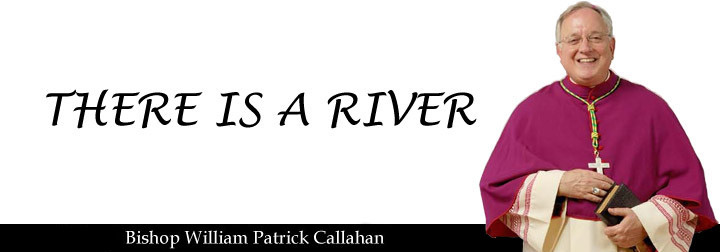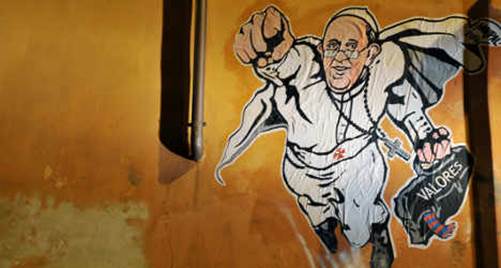A while ago I spoke concerning the truth and the integrity of Pope Paul VI’s great encyclical letter, Humanae Vitae. I said that it was one of the most prophetic and true papal documents ever written. Believe it or not, I received several letters in response to that statement from all over the country. Some very intelligent people told me that I was truly out of my mind and I should recognize that “we are beyond that” and “nobody believed that stuff then, and even fewer believe it now.” Well, I guess I never claimed to be all that “current” and “progressive” and all, so I continue to speak and write about it because it matters—and must be made part of our discussions, because as Catholics we seem to have become desensitized surrounding the issues of contraception and abortion (AKA “birth control,” or “women’s health care”).
In 1968—what a year—I graduated from high school and Pope Paul VI issued Humanae Vitae. It was surprising for me to see how many priests and sisters did not support the encyclical and were eagerly trashing the Pope who wrote it! Yes, that was quite a hot summer—1968. As I later began to study theology in the seminary, I discovered the central facts—predictions—prophecies—of the encyclical and their impact upon society.
- First—a “general lowering of moral standards” resulting from sex without consequences;
- Second—the danger that men may reduce women “to being a mere instrument for the satisfaction of [their] own desires;”
- Third—an abuse of power by public authorities; and,
- Lastly—a false sense of autonomy.
The encyclical acknowledges that “perhaps not everyone will easily accept this particular teaching.” The Pope, however, goes on to point out that “Since the Church did not make either of these laws, she cannot be their arbiter—only their guardian and interpreter.” The Church cannot “declare lawful what is in fact unlawful.” The encyclical closes with an appeal to public authorities to oppose laws that undermine the natural moral law, an appeal to scientists to further study effective natural methods of family planning, and appeals to doctors, nurses, and priests, to actively promote those methods. Five years later on 22 January 1973, the Supreme Court ruled favorably in the case of Roe vs. Wade. The world has never been the same.
A sad commentary on our time, based on that little chapter of history, is how the Church now finds Herself engaged in a battle to safeguard religious liberty and individual conscience protection in the matter of the mandatory inclusion of contraceptives, abortifacients, and other medical procedures in the Affordable Care Act and reform of healthcare for our country. Currently, the battle seems to focus its attention on the Little Sisters of the Poor, an outstanding community of consecrated Religious women whose only mission is to care for the elderly poor. They fulfill their mission with the zeal and compassion of Christ Himself. My mother died with ten Little Sisters surrounding her bed praying for her and consoling her in those last moments. I am very fond of these Sisters.
Now, however, they are being coerced into accepting the very things that the Pope so clearly condemned in 1968 as they are told they must participate in “health care reform” or face fines and penalties. If they provide health care coverage that does not include contraceptives, including abortion-causing drugs and sterilization, the fines they face will close down their homes and force the elderly poor people they care for into the far less reputable care of others.
Like St. Thomas More, who opposed Henry VIII in 1535, all they have to do is “sign the paper” and let others give and pay for the contraceptives, abortifacients, and other “critically needed” health care procedures. Thomas More was executed rather than sign the oath that would make Henry the leader of the Church. We, however, have a tried and true weapon to fight tyranny and despotism, the Constitution of the United States. It protects us and our individual consciences from laws that usurp the practice of our religious freedom.
I encourage you to consider today, dear reader, the astonishing fact that those who attack the Little Sisters on this mandate know well the Constitutional issues involved, but they are not worried. They fall back on the fact that most Catholic women don’t follow the Church’s teaching on contraceptives. They brag that in fact over 90% of Catholic women have used contraceptives in the past at least once. They use our own lack of knowledge, understanding, and fidelity to Church teachings as a bludgeon against us. That is the “unkindest cut of all.”
Compassion and sensitivity are necessary when approaching the issues at hand; there is no doubt. Once again, however, knowledge of our faith and appreciation of our teachings is so important for us. If we don’t reclaim the heritage of our faith and the correct vision for our livesHumanae Vitae gives us, others will take that ideal from us and ultimately use it against us—and sadly, we will not even see it coming. The virtue of courage is necessary for us to conquer fear and the gift of faith is life in Christ. As Chesterton once said: “The man who stands for nothing, will fall for anything.” Please review and study your faith. Read the Catechism and especially study the teachings of our most recent popes—they have indeed been gifts to our generation.
Our presence at Sunday Mass sure helps!

